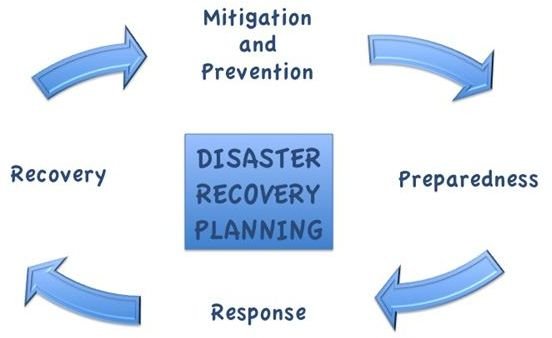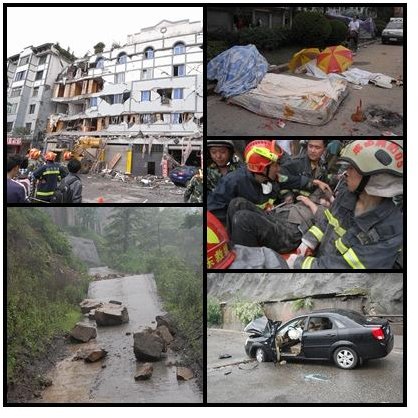How to Write A Disaster Recovery Plan
Introduction
How to write a disaster recovery plan is a question that is always significant for all organizations. Disaster recovery planning has become progressively significant for companies that are conscious of natural disasters and human actions. A disaster recovery plan basically will mitigate the material and data losses, improve the processes to minimize the loss in future due to disaster, and facilitate to regain the business at the earliest. Although every business has exclusive data and resources to preserve, broad standards can be applicable to all disaster recovery plans.
One of the basic constituents of a project management plan is the creation and analysis of a disaster recovery plan. A disaster recovery plan must be integrated with the general management plan, be concise, and should concentrate on the major actions necessary for the recovery from disaster. After being tested, it should be regularly updated, be assigned with a proprietor, and facilitate the attainment of the recovery objectives.
Image Credit:
_
commons.wikimedia.org/Gençosmanlı
Recovery Plan Objectives
One of the most vital starting points for a disaster recovery plan is to declare the commencement of a disaster after the occurrence of a particular catastrophic event is established to be serious. The vital disaster recovery plan objective is to analyze the important actions that are needed to restore the services at the earliest. The main recovery objective for the organization recovery plan is the time involved in implementing the recovery plan. The response time should be as short as possible, since the damage will increase unless the disastrous event is controlled expeditiously. Furthermore, the manager should know the duration for which the business can function without the element involved in disaster.
Elements of a Disaster Recovery Plan
It is essential that the following should be included in this plan:
Scope: The scope of the disaster recovery plan must be unambiguous, including its capability and the occasions for which the plan is to be used. It is recommended that the outcome of an event may be the focus instead of the causes. The same process and recovery stages must be followed regardless of the cause–fire, flood, terrorist incident, or aircraft impact that will result in the total or partial destruction of the organization. The scope will identify the particulars the plan will include and, most significantly, the details that the plan will not include. The important stakeholders should be included during the development of this plan.
Budget Requirements: Categorize the resources, with cost effects that will be necessary for the completion of disaster recovery plan. This will include the time of employees and the physical resources like equipment. The budget estimates should be realistic and based on reliable data and expert opinion.
Responsibilities: Roles should be defined and disseminated to the individuals or groups concerned who have been assigned duties in this plan. Names and contact details must also be recorded so that the persons concerned may be contacted easily and immediately when required for the recovery duties. Appropriate recovery training should be imparted to the persons who have been assigned such duties. To ensure success, the best people should be selected from the organization.
Actions After Disaster: A checklist should be carefully prepared to ensure the smooth and proper execution of the requisite actions after a disaster occurs. This list will be according to the type of the project and the nature of the disaster. However, following may be commonly included in the plan:
- Immediately inform the insurance company concerned.
- Distribute inventory list to the recovery team for searching the lost items.
- Procure the damaged or lost items, and obtain guidance from the inventory list.
- Put a message on the organization’s web site, intimating the occurrence of a disaster.

Image Credit: wikimedia.org/DaniellaU6
Fire Plan Example
A fire escape plan is used as an example since a fire may cause devastating effects if not controlled immediately. This plan should include the initial actions like procedure for moving out of the building, which may be difficult since the exit path could be closed due to fire. Thus, a sketch may be essential defining emergency exit routes, provision of a ladder to move out from upper floors, and emergency telephone numbers for informing the fire control department and insurance company. In addition, a place may be designated to meet after moving out from the place of fire. Those who are physically challenged should be evacuated first. Movement should not be directly through a smoke-filled area, but crawling would be recommended. If telephone services have become ineffective, shout loudly for help. Time is of utmost importance during a fire. Thus, all actions should be expeditious; otherwise a fire may cause serious damage. Fire plans should be known to all company employees and frequently rehearsed.
Conclusion
This article explains how to write a disaster recovery plan. An organization disaster recovery plan is necessary for the continuous stability of the organization. Even though the plan may rarely be used, its preparation is vital for the protection of the organization’s assets. The success of the disaster recovery plan will be increased if accountability is well defined, the plan is realistic and tested, and people are well trained on its implementation. The support of company executives will enhance the probability of success of the plan. Moreover, the plan should be regularly monitored to ensure prompt updating when required due to organizational changes.
Reference
Federal Emergency Management Agency:
Purpose of Standard Checklist Criteria for Business Recovery at https://www.fema.gov/business/bc.shtm
and
Disaster Recovery Program Review Checklist at https://www.cio.ca.gov/OIS/Government/documents/pdf/DRP_Review_checklist.pdf
